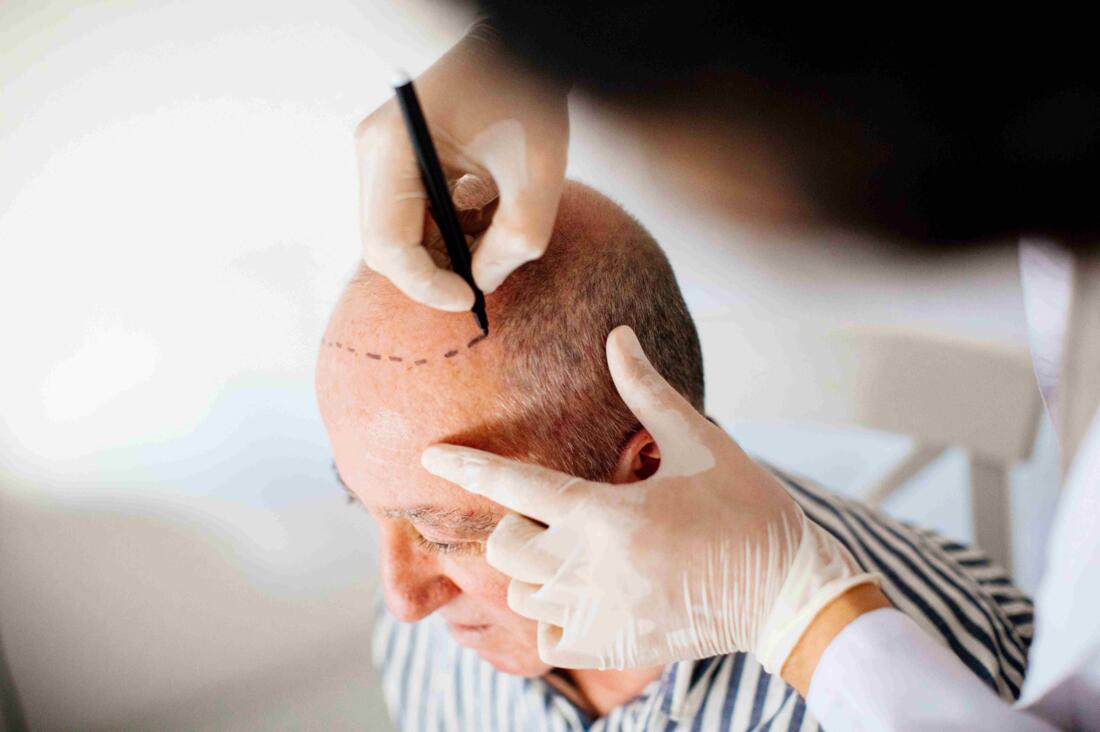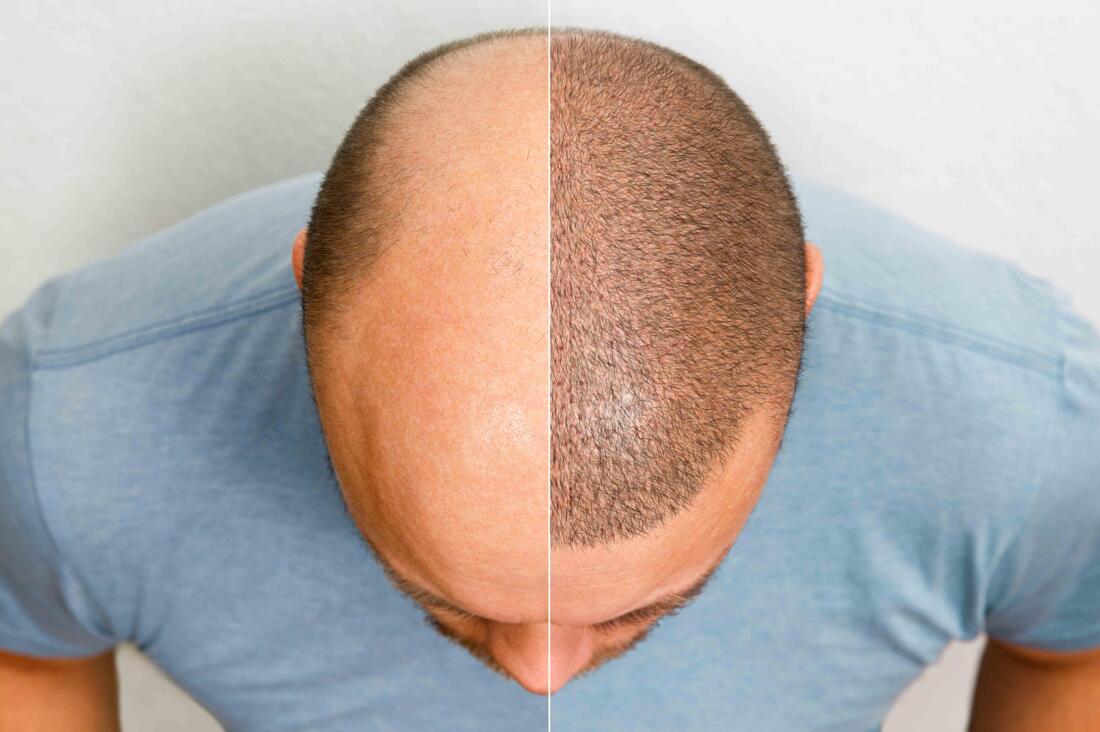Experiencing hair loss can be upsetting, impacting not only the head but also a person's self-worth and assurance. Luckily, there have been substantial advancements in the field of hair restoration, providing fresh optimism for individuals dealing with hair loss.
Overcoming Hair Loss
The most advanced methods in hair restoration have become more refined and successful than in the past, delivering authentic outcomes with little discomfort.
Two widely favored techniques are Follicular Unit Extraction (FUE) and Follicular Unit Transplantation (FUT), each offering unique benefits.
These processes focus on precisely removing and positioning hair follicles to guarantee that the fresh hair growth appears as natural as can be.

FUE Method
The FUE technique has become increasingly popular because of its minimal invasiveness and the lack of a visible linear scar.
During this process, hair follicles are carefully removed from the scalp without using a scalpel or requiring stitches, leading to a faster recovery time and reduced discomfort after the operation.
This method's precision enables the new hair to be positioned to follow the natural growth pattern, creating a seamless look with the existing hair.
Moreover, advancements in robotic technology have improved the FUE method, increasing its precision and effectiveness.

FUT Method
Alternatively, FUT, also known as strip surgery, involves extracting a small strip of tissue from the back of the scalp where hair is less prone to thinning. The follicles are then separated and relocated to areas experiencing hair loss.
Although this approach may result in a visible linear scar, it is typically obscured by the patient's existing hair and can be a more cost-efficient choice for individuals in need of numerous grafts.
Both FUE and FUT boast high success rates and can be customized to suit the individual requirements and desires of each patient.
By utilizing these advanced methodologies, individuals grappling with hair loss stand a better chance of attaining a full and natural-looking head of hair, which not only revives their locks but also enhances their self-assurance.
Understanding Hair Loss Causes and Patterns
Hair loss can be attributed to a variety of factors, including genetic predisposition, hormonal changes, medical conditions, and lifestyle choices. Androgenetic alopecia, commonly known as male or female pattern baldness, is the most prevalent form, affecting millions worldwide. This condition is driven primarily by genetics and hormones, leading to the gradual thinning of hair. Other causes such as stress, nutritional deficiencies, and certain medications can also accelerate hair loss. Understanding these underlying causes is crucial for determining the most effective hair restoration approach tailored to each individual's unique situation.
The Role of Consultation in Hair Restoration
Consultation is an essential first step in the hair restoration journey. During this process, patients meet with specialists who assess their hair loss condition and discuss potential treatment options. This personalized approach allows practitioners to evaluate factors such as the extent of hair loss, scalp health, and the patient’s expectations. A thorough consultation not only informs the patient about the available procedures but also helps in setting realistic goals for the outcomes. Patients are encouraged to ask questions and voice concerns, ensuring they feel comfortable and informed about their choices moving forward.
Post-Procedure Care for Optimal Results
After undergoing hair restoration procedures like FUE or FUT, proper post-procedure care is vital for achieving the best possible results. Patients are typically provided with detailed care instructions that include how to clean the scalp, medications to manage discomfort, and guidelines for avoiding activities that could affect healing. Maintaining the right environment for hair follicles to thrive is essential, which may involve avoiding direct sun exposure, refraining from strenuous exercise for a few weeks, and following up with the healthcare provider regularly. Adhering to these post-care guidelines plays a significant role in the success of the hair restoration process.
The Impact of Nutrition on Hair Health
Nutrition plays a pivotal role in maintaining healthy hair and can influence the success of hair restoration procedures. A balanced diet rich in vitamins, minerals, and proteins supports hair growth and overall scalp health. Nutrients such as biotin, zinc, and omega-3 fatty acids have been linked to stronger hair follicles and improved density. Individuals considering hair restoration should focus on incorporating a variety of nutrient-dense foods into their daily meals. Consulting with a nutritionist can provide personalized dietary recommendations that complement hair restoration efforts, further enhancing the potential for successful outcomes.
Emotional and Psychological Benefits of Restoration
Addressing hair loss through restoration can lead to significant emotional and psychological benefits. Many individuals report increased self-esteem and confidence after regaining a fuller head of hair. This transformation can positively impact various aspects of life, from personal relationships to professional opportunities. Furthermore, the psychological relief that comes from reversing the effects of hair loss can enhance overall well-being. Patients often express feelings of empowerment and satisfaction, knowing they have taken proactive steps to improve their appearance and self-image, which can lead to a more fulfilling lifestyle.
Long-Term Maintenance and Hair Care
After successfully undergoing hair restoration, long-term maintenance is crucial to sustain the results achieved. Regular follow-up appointments with hair restoration specialists allow for monitoring of hair growth and scalp health. Patients may also be recommended specific hair care products designed for their scalp type and hair condition. Such products can help maintain moisture, prevent damage, and support the longevity of hair follicles. Additionally, adopting a consistent hair care routine, including gentle washing and avoiding harsh treatments, ensures that the hair remains healthy and vibrant for years to come, complementing the results of the restoration process.
AI-Assisted Content Disclaimer
This article was created with AI assistance and reviewed by a human for accuracy and clarity.